Babcock International has supported the delivery of a significant milestone for the Spanish Navy, with its customer Navantia unveiling the first in class S-80 submarine in Cartagena Spain.
The S-80 programme is the first modern submarine of Spanish design and will deliver a “state of the art underwater capability” to the Armada Española.
Accoding to the firm:
“Babcock plays an integral role on the platform, bringing to bear our extensive experience and world leading proprietary technology to deliver the Weapon Handling and Discharge Equipment (WHDE) and Acoustic Countermeasures Launchers (ACM) for the four boat class. Throughout design and build stages Babcock developed a bespoke Spanish supply chain to manufacture a significant amount of equipment for the S-80. The weapon tube Outboard Lengths and the Weapon Embarkation Equipment were the largest pieces of equipment manufactured in-country. Babcock will continue to manufacture a significant amount of equipment in Spain for the remaining boats on the programme.”
Richard Drake, Managing Director Babcock Defence Systems Technology said:
“We are absolutely delighted to support the delivery of a cutting edge sovereign submarine capability for Spain. Congratulations to Navantia and all industry partners involved in the rollout of the first in class, a truly remarkable day in which many years of hard work throughout the supply chain has come to fruition. Babcock’s work on the S-80 class is a testament to our expertise in Weapons Handling and Launch systems and underlines our global naval design, build, commissioning and support capability for submarines. We look forward to continuing the build and commissioning work on the next three boats, and supporting successful Harbour Acceptance Trials and Sea Acceptance Trials before Boat 1 is formally commissioned into the Spanish Navy.”
The first submarine which was unveiled on the 22nd of April, to be named Isaac Peral (S-81), is expected to be delivered to the Armada Española in 2022.
This will be followed by the Nariso Monturiol (S-82), Cosme Garcia (S-83), and Matero Garcia de los Reyes (S-84).


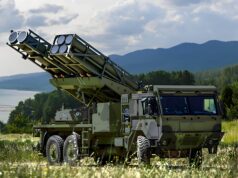

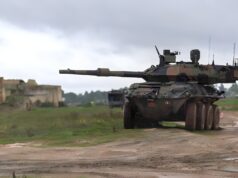
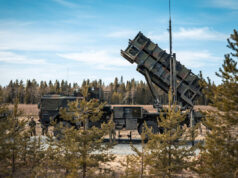
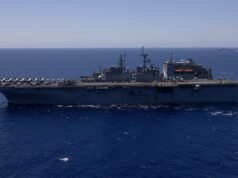
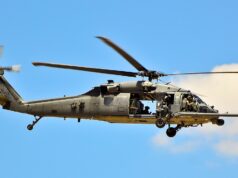



Well isn’t that ironic, a man named Drake is overseeing an armament programme for the Spanish Armada
As a guy from Plymouth i like that
Questions for the buffs: Why are astute submarine hulls matt texture and this one is so shiny?
Perhaps its the type of anechoic tiles being used?
Exactly that and all rather classified. The tiles apparently help the Astutes have an acoustic signature similar to that of a baby dolphin.
Because the Astute class are fitted with acoustic tiles.
Knowing BAE it will because matt paint is cheaper than gloss paint.
Because the Astute class are fitted with acoustic tiles.
If you think the Astute Programme was troubled you should compare it to these – a very painful way to Build a Submarine.
Wow, laid down 2005 and only launched this week, crazy. Looking like another 2 years for delivery, so 18 year build times each on their 4 boats!!
Agreed Navantia look like amateurs and did a horrible job on the S80 (propulsion issues, could not resurface, docks), and the sub isn’t even operational yet! Makes you wonder what other surprises are around the corner. This makes the F35 program look good in comparison, although not same budgets.
I can’t see anyone wanting to buy these on the export market, unless the price is hugely discounted compared to competition.
No match for the UK’s Astute Subs, which are faster have longer endurance, and carry more weapons.
Different fish, not really comparable to be honest. Nuclear boats are all about strategic mobility, electric boats are essentially area denial weapons.
Is the Astute/Dreadnaught build progress dictated by the lack of skilled manpower or the available shed space?
Just wondered why they can’t build Astute and Dreadnaught simultaneously.
Progress is not too bad considering, but yes there are constraints with Space and Skilled Employees, saying that Astute Production is ongoing and Dreadnought Construction has started so there must be Capacity for Multiple Builds.
I would think that the budget is the big limiting factor to be honest. With Astute costing £1.2bn a ppp, that is the submarine budget for the year used up and more, no pennies over for SSKs let alone SSBNs.
They have to keep a reasonable spread so they do not hit a production gap and loss the skilled workforce. Strategic workforce planning as one of the dark arts that people forget. You cannot boom bust with a high knowledge base workforce, you can only go steady and constant. With clear plans of how to Both retain and develop your present work at the same time keep the training pipelines running steady.
So if we end up with a total nuclear submarine fleet of 10 ( 6 hunter killers, 4 ballistic missile) each with a 25 year life you can only produce one sub every 2.5 years if you want to keep your workforce. Say you did rush out the 4 dreadnoughts at the same time as the last astutes, you would end up with no work for years and lose the workforce and dockyards. With surface ships or even electric boats you could solve that problem by selling of some hulls at mid life and ordering new hulls. You can’t do that with nuclear boats as very few nations would ever be able to operate them and you just don’t sell nuclear boats even to allies. Also end of life involves a massive cost in defaulting decommissioning/ safe storage of radioactive etc.
The U.K. needs to build nuke boats for Australia. They need the real deal to counter the parabolic China threat, not warmed up SSK’s.
Hi mate, they can and probably are. I imagine Astute hull 6 is nearing completion with hull 7 perhaps a year behind. Dreadnought hull 1 will have been started.
As @Paul T has said, a bit of all of that and logistics supply. The Barrow facility is only so big, so needs a constant supply of materials, as space is limited, which all needs paying for.
They are extremely complex bits of kit to build, you can only get so many working on it at any given time.
I expect that they will start work on SSN(R) hull 1 sometime between Dreadnought hull 3&4 .
One presumes as there is a limited amount of hulls to build with the classes effectively alternating the build speed and timing has to fit in so that there isn’t a big gap between the classes relative replacement. If there were any prospect of exports that might be a little different but building them concurrently would not as a result be practical though a little overlap seems ok.
When the S80 was started (a long time ago), I think a key bit of it was made in Barrow.
This submarine is more expensive per ton than an Astute.
I heard a rumor a while back that’ as designed the Spanish subs, once sunk, could not be refloated due to an young engineers miscalculation. Anyone know the truth about that?
Correct – as Designed the Buoyancy Mathematics didn’t work and the error wasn’t discovered until well into the Sub’s Construction,the ‘Fix’ was to Cut the Submarine open,insert another Section which increased the Dimensions and Tonnage but made them able to Submerge and Surface properly.
What you say had “heard” is not true! The buoyancy miscalculation was discovered during the design phase. It was corrected and by means of that correction the submarine is larger and hence more capable.
This new sub looks pretty good. Its underwater autonomy is the closest to the nuc’s in the market. I guess it is going to get a good cut of the sub market in the coming years.
This sub S-80 looks pretty sexy. I’m sure it’s going to take a good chunk of the international subs market in the coming years.
Navantia already did it!
Royal Australian Navy: 3 Hobart-Class destroyers (based on the Navantia designed F100 frigate) + 2 LHDs + 2 AOR’s